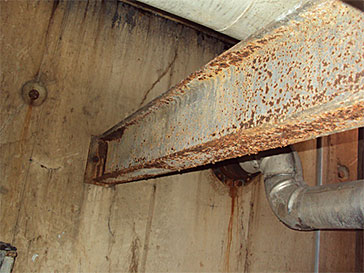
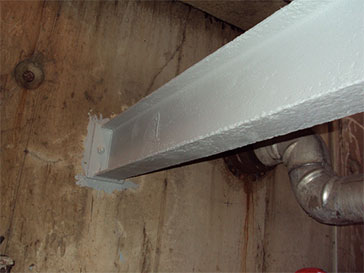
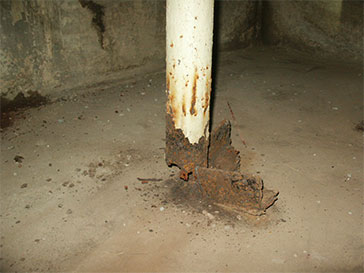
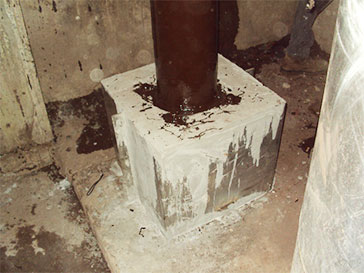
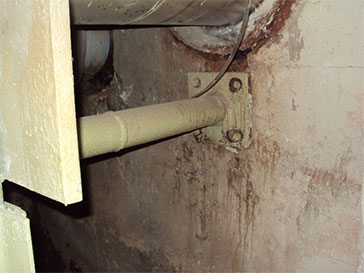
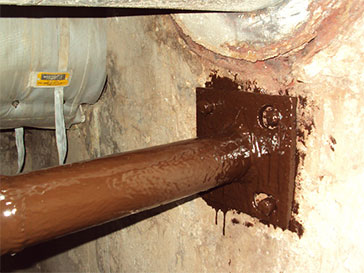
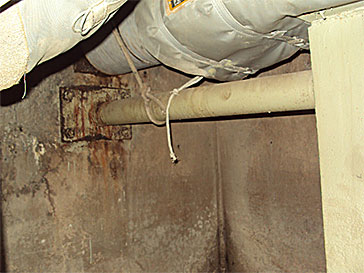
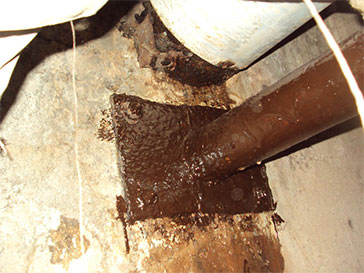
The Nashville District Energy System’s distribution system is comprised of direct-buried piping, underground manhole structures and thousands of feet of underground tunnels that house the chilled water, steam and condensate return piping. More than forty manholes, both stand alone and those connected to tunnel segments, provide access to the system for inspection and maintenance. These manholes and tunnels include piping supports which are essential to the operation of the distribution system.
Anchors and/or guides are some of the important, and critical supports which dictate the proper operation of the distribution system. These anchors and guides control where and how much the pipe expands and contracts due to temperature changes. Most of these supports are structural steel (which is subject to corrosion) and failure of some supports could result in damage to the system and potential disruption of services to customers.
Therefore, maintenance to the system over time is essential, although it poses unique challenges given the environment in which the system operates. While the piping is insulated, the steam piping operates at 366°F. Therefore, temperatures inside the manholes are elevated relative to ambient conditions. In addition, the environment is naturally humid with storm water runoff and groundwater seepage. At times water can even accumulate and make contact with the steam pipes, causing this water to boil, adding to humidity. It’s also important to point out that in an environment saturated with air, the corrosion rate of steel increases as the steel temperature rises to about 180° to 200°F. Above this temperature, the corrosion rate starts to decrease.
Therefore, the conditions in the distribution tunnels and manholes are ideal for accelerated corrosion. The techniques to fight corrosion have been diligently tested and aggressively applied over the past few years. To-date, 7 different coating types have been tested on steel supports/anchors to identify one that offers the easiest, most cost-effective solution while achieving the greatest overall life.
Hot Dip Galvanizing is a preferred method for certain components that can be easily accessed and replaced without shutting down the system. Powder Coating has shown some success on components that are not exposed to the extreme environmental conditions. Five additional coatings have also been tested/used with varying degrees of success.
With paint coatings, preparation of surfaces is paramount and labor intensive given the complexities of structural steel. Inspection of surfaces is required by experts in coating applications to ensure highest levels of performance. Any corrosion remaining under a new coating usually results in coating failures. Likewise, maintaining prepared surfaces until it is ready for coating application, making environmental conditions comply with the coating specification, and venting the work area during the application process are all resource intensive and challenging.
Fortunately, new coating technologies that require much less intense surface preparation and less restrictive environmental conditions are now available and have been deployed in recent tests with cautiously optimistic results. Needless to say, this is a vitally important, ongoing process to keep the Nashville District Energy System in sound operating condition.
